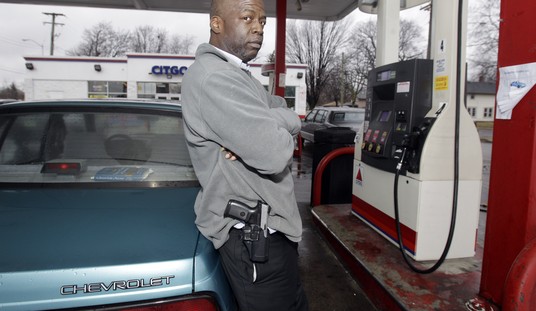WASHINGTON, D.C. — It took nine years, seven months and 21 days to pinpoint the man who plotted, paid for and perpetrated the terror attacks of 9-11-01. When a U.S. Navy SEAL team finally found Osama bin Laden in the third-floor bedroom of a comfortable house in a suburb of Islamabad, Pakistan, they killed him.
Last Sunday’s complex and highly successful operation validates Ronald Reagan’s maxim for terrorists after U.S. Navy SEALs captured the murderous hijackers of the Achille Lauro in October 1985: “You can run, but you can’t hide.” Afterward, one of the participants penned a corollary: “Don’t bother to run — you will only die tired.”
Those axioms were validated again last Sunday by a 24-man Navy SEAL task force and aircrews from the 160th Special Operations Aviation Regiment — the “Nightstalkers” — when they took out the world’s most wanted terrorist.
These “Operators” — part of the same “Tier One” Joint Special Operations Command (JSOC) unit the Reagan administration employed in Grenada in 1983, and two years later during the Achille Lauro hijacking, are now the focus of public acclaim and controversy thanks to the O-Team’s insatiable thirst for public approval.
President Barack Obama’s surprise announcement at 11:35 p.m. Sunday night, “The United States has conducted an operation that killed Osama bin Laden,” has generated well-deserved accolades for those who planned and executed the mission. Unfortunately, it has also prompted extraordinary criticism, speculation and damaging revelations about operational capabilities that ought to remain classified at best or uncertain at least.
Within hours of Obama’s announcement, unnamed administration officials were providing what turned out to be conflicting details on what transpired in Abbottabad. This transparent attempt to show how closely the White House “supervised” the operation only served to stimulate a tsunami of controversy and obscure the extraordinary courage and skill with which the raid was carried out.
The O-Team should have known the so-called mainstream media’s quest to find fault with the U.S. military would not be placated by the narrative they had released. The potentates of the press demand to know:
“Did the SEALs ‘botch’ the destruction of a damaged MH-60 helicopter” at the compound?
“Was there a 40-minute firefight with the SEALs or not?”
“Did the president personally order bin Laden killed?”
“Why the haste to give this murderous terror leader a Muslim burial at sea?”
“Why not release photos of the dead terror kingpin?”
At the United Nations, America’s critics now want to investigate whether Osama bin Laden’s human rights were violated. Pakistani officials, implausibly claiming they knew nothing of the al-Qaida founder’s presence in the compound, are complaining about violations of their sovereignty. A Native American tribal leader has even groused about bin Laden’s code-name: “Geronimo.” And in Congress, anti-military doves insist we should immediately pull U.S. troops out of Afghanistan.
None of this had to happen. All the White House had to do once they knew bin Laden was dead was to say nothing. That’s the way it’s supposed to be for covert operations. When asked, respond with: “No comment.”
Such a course of action would no doubt result in extraordinary speculation. Photos of the tail section of a U.S. MH-60 helicopter and images of the dead taken by Pakistani authorities after the raid would still get published, and global “social networks” would be full of rumors, theories and supposition for weeks or months. But intricate details on intelligence means and methods, tactics, techniques and procedures, numbers of U.S. personnel involved and unique communications equipment and capabilities would remain matters of conjecture.
Inevitably, there would be unconfirmed “leaks” from officials in Washington and Islamabad. Yet, the message to America’s enemies would still be the same. Be afraid. Be very afraid. After all, that is the reason we have JSOC.
A “we will not confirm or deny” statement from the White House in the aftermath of the JSOC operation would have made it more difficult in the short-term for Obama to appear “decisive” and “hands on.” But years from now, when the full story was finally revealed, he would have been seen as more “presidential.” It also would have made it easier for those friends we do have in Pakistan to continue cooperating with our military and intelligence services.
Some lessons learned:
Our Special Operations troops are world-class athletes who employ remarkable technology while taking enormous risks. Only a small handful — like Navy SEAL Medal of Honor recipient Michael Murphy, for whom a destroyer was named this week — are ever recognized for their courage.
Second, the enhanced interrogation techniques approved in the Bush administration worked. Thank you, GWB.
Third, U.S. bases in Afghanistan were essential to the success of the operation. The ayatollahs running Tehran’s nuclear weapons program are hoping we quickly pull out of Iraq and Afghanistan.
Fourth, the decision not to release “death photos” of bin Laden was right. Bowe Bergdahl, a U.S. Army soldier, is still being held by the Taliban. Enough said.
Finally, we are told by the president’s handlers that he made a “courageous” and “gutsy call” in ordering the SEALs to eliminate al-Qaida’s founder, instead of doing it with a JDAM or a cruise missile. But given what we now know about where bin Laden was hiding — surrounded by an entire division of Pakistan’s Army — that was never really an option.
Obama really had but two choices: Go with the JSOC mission or not go at all. He made the right decision. Regrettably, he also decided he wanted everyone to know about it.
Killing Osama

Advertisement







Join the conversation as a VIP Member